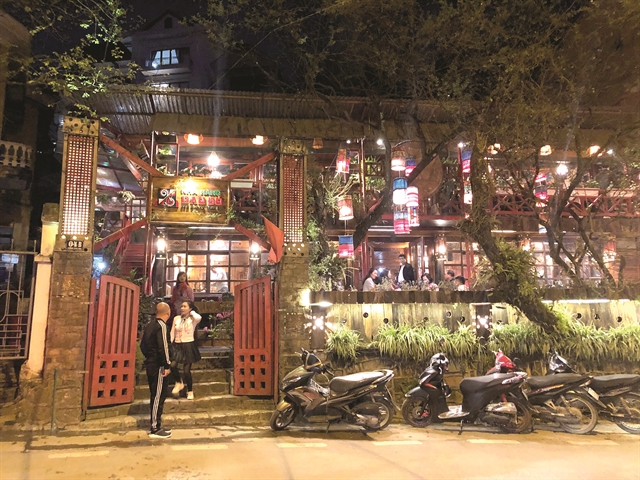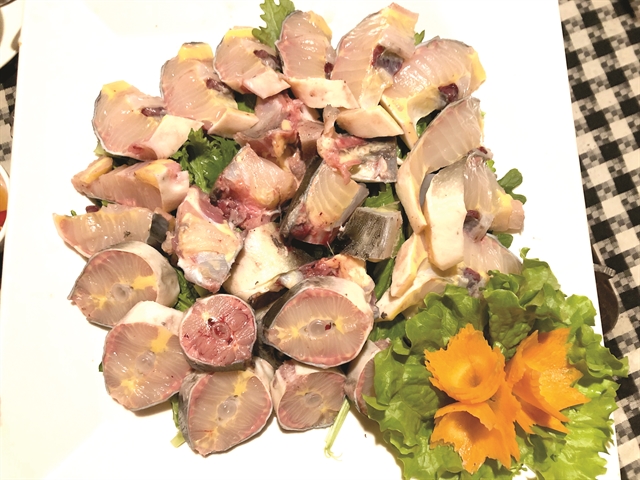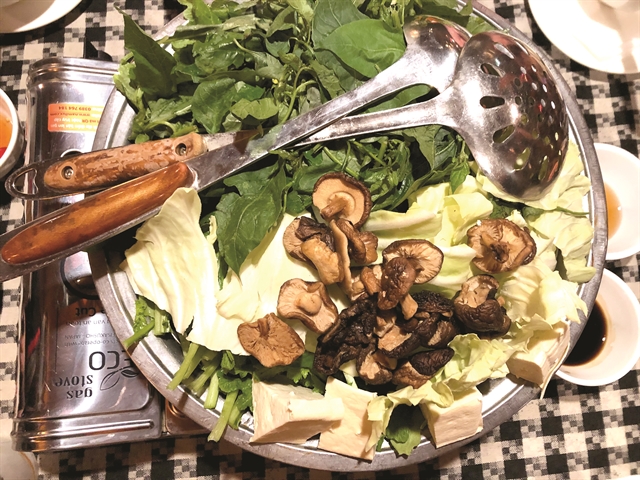
WELCOMING SIGHT: The nuanced colourful lanterns adorn two storeys of the Red Dzao on the town's signature Thác Bạc Street. VNS Photos Mỹ Hà
by Nguyễn Mỹ Hà
No matter how often the media, reporters and travel bloggers cry out loud that Sa Pa is no longer the sleepy town in the clouds with beautiful ethnic Red Dao and Mông people walking on the streets, Vietnamese and international tourists keep going there.
Everyone says bad planning and chaotic construction make Sa Pa a disaster of architecture, yet people still come flooding in.
Sa Pa has an age-old charm that no one can deny it. But how the town has maintained its charm alongside a growing construction site remains a mystery.
Earlier this spring, before the current fourth wave of COVID-19 that has brought Việt Nam's positive cases up to more than 1,300 during three weeks, we headed uphill to Sa Pa.
We took the national highway that brought us to Lào Cai Province within three hours, something I could never have imagined back in the 1990s. We have a friend who has a hill home up there and they drive there almost every weekend. Sa Pa is more within reach than ever.
There are now many upscale and stylish five-star hotels there, but simple homestays or renovated Mông style houses have a unique charm. The good side of mass tourism means comfort and good sanitation are now standard.
There are a few must-do things for any trip to Sa Pa, no matter how many times you have been, including a calm walk, a sizzling hotpot for dinner and a hot Dao forest leaf bath or foot massage.

LOCAL SPECIALITY: Fresh sturgeon from the cold waters of Sa Pa ponds are the main ingredients of the famed hotpot.
After a long day that took us around town and to the famous Ô Quy Hồ Pass, where you can watch the beautiful sunset, we were all tired but still wanted to leave our hotel to venture out into the nightlife of Sa Pa.
We were recommended The Red Dzao House by someone, who knew the owner and gave us a special password for a 20 per cent discount on the bill.
Tucked under a tall tree, the two-storey, stilt house that hosts The Red Dzao is adorned by dozens of lanterns in the garden and dropping down from the tree. The fabrics were all Dao and Mông patterns and the designs of the lanterns varied to provide enough lightings while being gentle on the eyes.
We ordered potato chips (VNĐ70,000) -- sweet potato chips are also available at the same price -- and some sweet corn chips for appetisers and saved our big meal for the signature sturgeon hotpot (VNĐ500,000).
Sturgeons and salmons are raised on farms in the hills around Sa Pa. The natural low water temperature all year round provides a good living environment for the fish. I've tried salmon hotpot a couple of times, so this time we decided to try sturgeon instead.
Honestly speaking, I'm a fish fan so as long as it's not fresh sashimi, if the fish is cooked in boiling broth, then I'm fine with it.
I called the restaurant's manager to check how they are doing amid this current wave of coronavirus and she sounded positive.
"We're currently closed to wait for new regulations, but we do deliver. If you need to order for delivery or book some food in advance, we can deliver. We have staff on duty," she said.

PLENTIFUL: This Sa Pa hotpot brings a variety of great flavours in one big meal.
The fresh vegetables that grow in Sa Pa have been well known nationwide for years. There were stories about cabbages grown in Sa Pa too big to wrap your arms around. I've also read that in the 1960s, there used to be cabbage farms in Sa Pa where there were only cabbages and boxes for people to drop money in when they wanted to take some veggies because there were so few people back then, no one was available for a sales position.
Today people may think that such tales could be made up. Look at the number of people coming to Sa Pa for work, or for easy tourism money make these stories unbelievable today.
Speaking of the flow of people coming to Sa Pa, everyone notices the beautiful Mông children clad in their traditional robes, who happen to be sitting or standing near crowded tourist locations. If you want to take their pictures or be pictured with them, you'll be asked to pay. In the past, elderly Mông ladies with ornate silver jewellery used to be the cliché pictures everyone wanted.
Today, it's painful to see that late at night, at 10pm in the chill of Sa Pa, these small children still hang around hotels, some asleep, some still awake, but no local police, or security spotted to tell them to go home, or perhaps home was too far away to head back at such a late time.
Getting back to our hotel for a late night sleep, still seeing those children spending the night on the pavements only a few hundred yards away suddenly brought us back in time, for at least 100 years. VNS
OVietnam